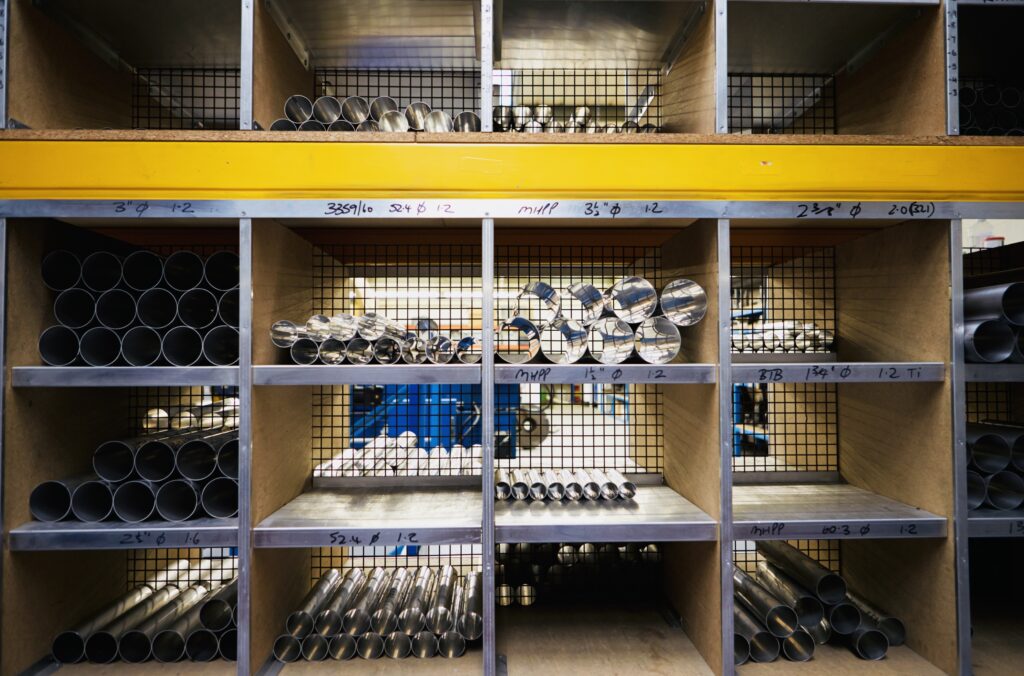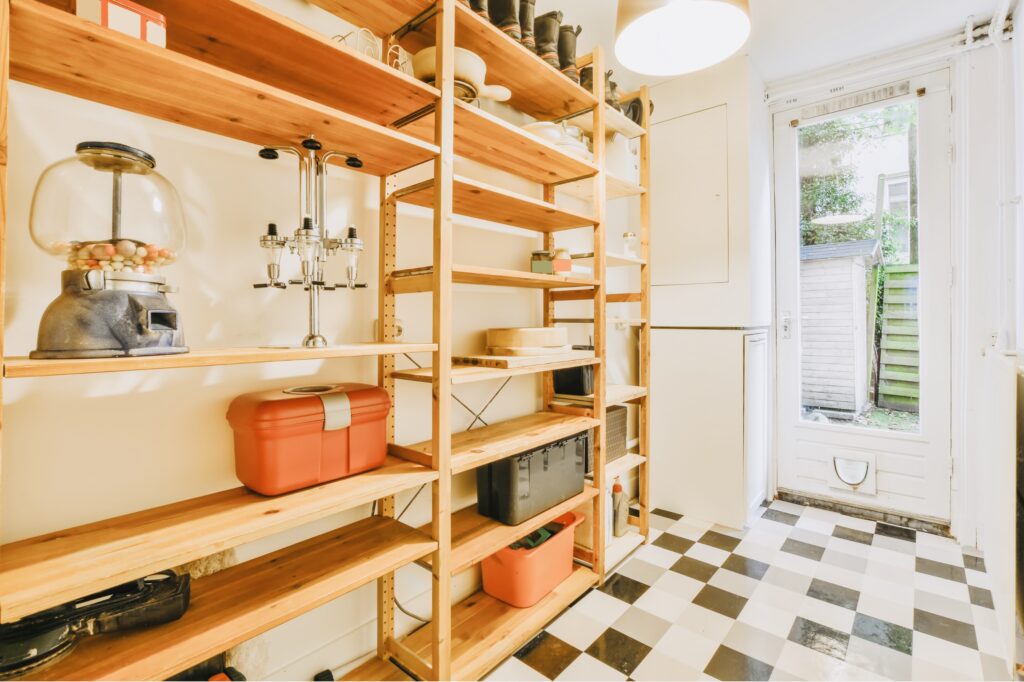Maximizing Garage Space: An Affordable Guide How To Build Storage Shelves In Garage
Creating organized storage in your garage is essential for maintaining a clutter-free space. One effective solution is building storage shelves that not only maximize space but also provide a systematic way to store items.

In this guide, we will explore the reasons for building storage shelves in the garage and provide a step-by-step guide on How To Build Storage Shelves In Garage.
Why Build Storage Shelves in the Garage
Garages often become a dumping ground for tools, equipment, and miscellaneous items. Building storage shelves helps optimize this space by creating designated areas for different items. It enhances accessibility, reduces clutter, and makes it easier to find what you need. Additionally, organized garages contribute to a safer environment.
Here are the highlighted beneficiaries:
Organization and Efficiency
Building storage shelves in your garage enhances overall organization, creating designated spaces for tools, equipment, and miscellaneous items. This systematic approach improves efficiency, making it easier to locate and access items when needed.
Clutter Reduction
The garage often becomes a catch-all for various items, leading to clutter. Constructing storage shelves provides a solution to declutter the space, offering a structured way to store belongings and maintain a clean environment.
Optimizing Available Space
Garages come in various sizes, and making the most of the available space is essential. Storage shelves allow you to optimize vertical space, utilizing walls efficiently and preventing valuable floor space from being underutilized.
Safety Enhancement
A well-organized garage is a safer environment. Building storage shelves ensures that tools and equipment are stored securely, reducing the risk of accidents. It also minimizes the chance of items falling and causing potential harm.
Customized Storage Solutions
Every garage has unique storage needs. By building shelves, you can customize the storage space according to the specific items you have, creating a tailored solution that suits your requirements perfectly.
Easy Access and Visibility
With organized shelves, items become more visible and accessible. No more rummaging through piles of items to find what you need. Storage shelves provide a clear view of your belongings, saving time and frustration.
Increased Property Value
An organized and functional garage adds value to your property. Prospective buyers appreciate well-maintained spaces, and a garage with thoughtfully constructed storage shelves can be a selling point.
DIY Satisfaction
Building storage shelves in the garage is a rewarding do-it-yourself (DIY) project. Taking on this task allows you to enhance your skills, personalize the garage space, and take pride in creating a more organized and efficient home storage solution.
Preparation for Future Needs
As your storage needs evolve, having custom-built shelves ensures flexibility. You can adapt the shelving units to accommodate new items or reorganize them as necessary, providing a long-term solution for changing requirements.
How to Build Storage Shelves in the Garage: Step-by-Step Guide
- Step 1: Planning: Before you start, assess your storage needs and available space. Plan the dimensions and placement of your shelves to ensure they fit seamlessly into your garage.
- Step 2: Gathering Materials and Tools: Explore the ideal materials for garage shelves, considering durability and cost. Common choices include plywood, 2×4 lumber, and screws. Collect the necessary tools, such as a saw, drill, and level.
- Step 3: Cutting Materials: Accurate measurements are crucial. Use your saw to cut the materials according to your planned dimensions, ensuring precision for a sturdy and uniform result.
- Step 4: Assembling the Frame: Construct the frame using the cut pieces, ensuring the corners are square. This forms the foundation of your shelves.
- Step 5: Attaching Shelves: Place your cut plywood or other chosen material on the frame and secure them in place using screws. Ensure proper spacing between shelves based on your storage needs.
- Step 6: Mount the Shelves: Once assembled, secure the shelves to the wall for added stability. Use a level to guarantee they are even and well-supported.
Choose the Right Materials: What Are the Perfect Materials for Garage Shelves?
Selecting durable and cost-effective materials is crucial for the longevity of your garage shelves. Plywood and 2×4 lumber are popular choices. Plywood provides a smooth surface, while 2x4s offer robust support.
Have a look for details:
Plywood: A Versatile Choice
Plywood stands out as a versatile and commonly used material for garage shelves. Its smooth surface and durability make it an excellent option for creating sturdy and reliable shelving units.
2×4 Lumber: Robust Support Structure
Utilizing 2×4 lumber provides a solid and robust support structure for garage shelves. This choice ensures strength and stability, which is crucial for bearing the weight of various items stored on the shelves.

Screws: Securing Your Structure
Selecting the suitable screws is essential for the structural integrity of your garage shelves. Explore different screw types and sizes to ensure a secure and long-lasting assembly. Properly chosen screws contribute significantly to the overall stability of the shelving units.
Brackets and Fasteners: Additional Support
Incorporating brackets and fasteners can provide additional support, especially for more extended shelves. These components enhance the overall strength of the shelving system, preventing sagging and ensuring durability over time.
Paint or Sealant: Protecting Against Wear
Consider adding a layer of paint or sealant to your garage shelves. This not only enhances the aesthetic appeal but also protects the wood from wear, moisture, and potential damage, extending the lifespan of your shelving units.
Level: Ensuring Precision
While not a material, a level is a crucial tool for ensuring the accuracy of your shelving construction. It helps maintain evenness and prevents the shelves from tilting or leaning, contributing to both the functionality and appearance of the final product.
Optional: Backing Material
For a finished look and added stability, you may choose to include backing material on your garage shelves. This could be plywood or another material that complements the overall design, providing a solid background for items and preventing them from falling off the back.
Considerations for Outdoor Use
If your garage is partially exposed to the elements, consider materials that can withstand outdoor conditions. Treated lumber or weather-resistant finishes can help protect your shelves from moisture and other environmental factors.
Budget-Friendly Alternatives
For those on a budget, explore cost-effective alternatives such as recycled or reclaimed wood. With creativity, you can still achieve sturdy and functional garage shelves without breaking the bank.
Personalization: Choose Materials for Your Needs
Ultimately, the perfect materials for your garage shelves depend on your specific needs, budget, and aesthetic preferences. Make your choices to create a shelving solution that aligns with your vision for an organized and efficient garage space.
How to Make Cheap Garage Shelves
Building cost-effective garage shelves can be achieved by opting for budget-friendly materials, utilizing recycled wood, and sourcing affordable hardware.
This section explores creative ways to keep your project economical without compromising quality.
FAQ
1. What is the Minimum Height Between Shelves?
A: The minimum height depends on the items you plan to store. For more oversized items, leave more space, but a standard recommendation is around 12-16 inches.
2. What is the Depth of Garage Shelves?
A: Typically, the depth ranges from 16 to 24 inches. Consider the size of your items and the available space when determining the depth.
3. Are Plywood Shelves Strong?
A: Yes, plywood shelves can be solid and durable, mainly when supported by a sturdy frame. Opt for thicker plywood for added strength.
4. What is the Standard Distance Between Storage Shelves?
A: The standard distance between shelves is often around 18 inches. Adjust based on your storage needs and the size of items you plan to store.
5. How Close Can Shelves Be to the Ceiling?
A: Leave at least a few inches between the top shelf and the ceiling to accommodate taller items and ensure ease of installation.
Final Word
Building storage shelves in your garage is a practical and rewarding project that enhances organization and functionality. By following this guide on How To Build Storage Shelves In Garage, you can create customized shelves that not only meet your storage needs but also contribute to a more efficient and tidy garage space.

